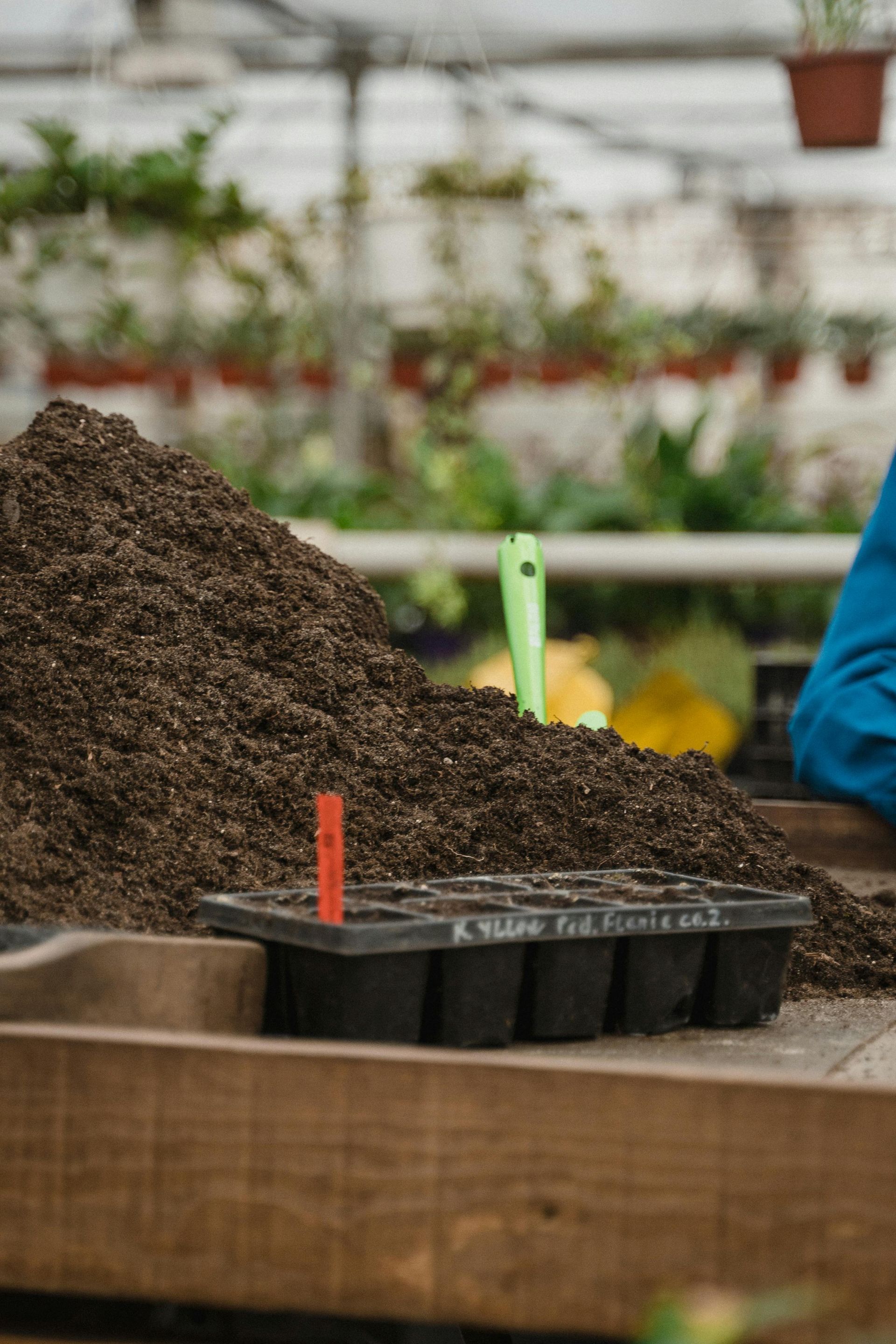Common Irrigation Mistakes and How to Avoid Them
When it comes to maintaining a healthy and vibrant landscape in Arizona’s arid climate, efficient irrigation is key. However, many homeowners unknowingly make irrigation mistakes that not only waste water but also damage their lawns and plants. From overwatering the lawn to ineffective sprinkler systems, these errors can lead to costly repairs, declining plant health, and higher utility bills. Understanding the most common irrigation problems and learning how to avoid irrigation mistakes can transform your outdoor space into a thriving, water-wise haven.
In this blog post, we’ll dive into typical issues homeowners face, provide actionable
irrigation troubleshooting tips, and outline best practices for
efficient irrigation in desert environments. Whether you’re using a
drip irrigation system or traditional sprinklers, this guide is packed with expert advice to ensure your landscape receives just the right amount of water—no more, no less.
The Impact of Improper Irrigation on Arizona Landscapes
Arizona’s climate presents unique challenges for irrigation. With low rainfall, high evaporation rates, and scorching summer temperatures, every drop of water counts. Proper lawn irrigation in such conditions is essential—not just for the health of your landscape but for environmental sustainability and cost efficiency.
Improper watering schedules, poorly maintained systems, or simply using the wrong type of irrigation for your yard can result in unhealthy grass, dying plants, and wasted resources. Moreover, issues like sprinkler system problems or drip irrigation inefficiencies often go unnoticed until damage becomes visible.
Investing time in learning how your system operates and recognizing red flags can go a long way toward preventing long-term damage.
Overwatering and Under Watering: The Two Most Common Mistakes
Perhaps the most widespread irrigation mistakes are the simplest—overwatering and under watering. Both have severe consequences, particularly in desert climates where plant stress is already a concern.
Overwatering the lawn suffocates roots by depriving them of oxygen and encourages fungal growth and disease. It also leaches nutrients from the soil, diminishing plant health. Meanwhile, excessive watering can lead to runoff, contributing to erosion and water waste.
On the other hand, under watering plants causes drought stress, wilting, and slowed growth. In extreme heat, even drought-tolerant plants can suffer if they don’t receive adequate moisture at the root level.
The key to avoiding both of these issues is understanding your plants’ needs and adjusting your watering schedule based on soil type, weather, and season.
Watering schedule mistakes are easy to correct when you begin observing your landscape and tuning in to its needs.
Sprinkler System Issues: Wasted Water and Poor Coverage
Sprinkler systems are a popular choice for lawns and large yards, but they come with their own set of challenges. Faulty sprinkler heads, clogged nozzles, poor alignment, or broken pipes can lead to uneven watering, wasted water, and dry spots in your lawn.
Another major issue with sprinkler systems is watering during the wrong times of day. Midday watering leads to evaporation before moisture can penetrate the soil, while evening watering may encourage mold and mildew.
To avoid these issues:
- Inspect your sprinkler system regularly.
- Run test cycles to ensure even coverage.
- Adjust heads to avoid spraying sidewalks or driveways.
- Water early in the morning when evaporation rates are lowest.
Consistent
irrigation maintenance can save you money and preserve your landscape’s health.
Drip Irrigation Problems: Slow Failures with Big Impacts
Drip irrigation systems are often recommended for Arizona’s desert landscapes because they deliver water directly to plant roots, reducing evaporation. However, these systems are not immune to problems. Drip irrigation problems include emitter clogs, tubing damage, and incorrect spacing—all of which can result in inconsistent watering.
Since drip systems are largely underground or hidden under mulch, issues may go unnoticed until plants begin showing signs of stress. Regularly checking emitters, cleaning filters, and inspecting lines for leaks or punctures is essential.
When installed and maintained correctly, a drip system is one of the most efficient methods of irrigation. It’s particularly useful for shrubs, flower beds, and desert-adapted plants.
Poor Irrigation Scheduling and Timing
A well-tuned irrigation schedule is one of the most important elements of a successful watering strategy. Unfortunately, watering schedule mistakes are incredibly common.
Many homeowners water too frequently, not deeply enough, or at the wrong times. The result is shallow-rooted plants that are less drought-resistant and more prone to stress. Others set timers and forget them, failing to adjust for seasonal changes in temperature, rainfall, and plant growth.
Here are some tips for optimizing your watering schedule:
- Water early in the morning between 4 a.m. and 7 a.m.
- Adjust frequency based on the season—less in winter, more in summer.
- Use the “cycle and soak” method for clay soils to prevent runoff.
- Check soil moisture before watering using a screwdriver or moisture meter.
Following these
efficient irrigation tips ensures your plants get the moisture they need without excess.
Ignoring Irrigation System Repairs and Maintenance
One of the most overlooked aspects of irrigation success is regular system maintenance. Over time, even high-quality systems develop issues: valves leak, filters clog, and timers malfunction.
Irrigation system repair should never be delayed. Minor issues can quickly become major headaches, leading to property damage or expensive utility bills. Schedule seasonal inspections—ideally at the beginning of spring and fall—to address any problems before they escalate.
Look out for these common warning signs:
- Unusually high water bills
- Pooling or soggy spots in your yard
- Dry patches or wilting plants despite regular watering
- Water spraying in unintended directions
Keeping your system in good shape not only prevents water waste but also improves plant health and landscape beauty.
Landscape Irrigation Errors from Poor Design
Many irrigation issues stem from poor planning at the design stage. An incorrectly designed system will never perform well, no matter how often you maintain it.
Landscape irrigation errors include:
- Using the same zone for plants with different water needs
- Failing to account for slope and drainage
- Overlapping spray patterns that waste water
- Installing emitters that don’t match soil type or plant size
Work with a knowledgeable landscaper to design a zone-based irrigation system that caters to each area’s unique requirements. For example, turf, trees, and flower beds should all have separate zones to allow tailored watering.
Smart irrigation controllers and weather-based sensors can further improve efficiency by adjusting schedules automatically based on weather conditions.
How to Avoid Irrigation Mistakes: A Proactive Approach
Avoiding irrigation mistakes doesn’t require expensive technology or advanced knowledge—it starts with observation and a willingness to adapt.
Walk your yard regularly and observe plant health, soil moisture, and system performance. Adjust your watering schedule as needed, especially when seasons change. Perform monthly system checks to catch small issues early. Stay informed on best practices for proper lawn irrigation, and don’t hesitate to bring in a professional when problems arise.
The key is to treat your irrigation system as an active component of your landscape, not a set-it-and-forget-it tool. By taking a proactive stance, you can reduce water use, enhance plant vitality, and enjoy a greener, healthier yard year-round.
Conclusion: Let Blossom & Oak Landscaping Help You Irrigate the Smart Way
Whether you're dealing with overwatering, sprinkler system issues, or drip irrigation problems, the solution lies in understanding your system and responding appropriately to your landscape's needs. Common irrigation problems may be easy to overlook, but with the right care and knowledge, they are also easy to fix.
At Blossom & Oak Landscaping, we specialize in irrigation troubleshooting, system repair, and customized watering solutions tailored to Arizona’s desert environment. Our experts can help you avoid costly landscape irrigation errors, fine-tune your schedule, and design water-efficient systems that save you time, money, and stress.
Ready to transform your irrigation habits and protect your investment? Contact Blossom & Oak Landscaping today for professional guidance and dependable irrigation services.


